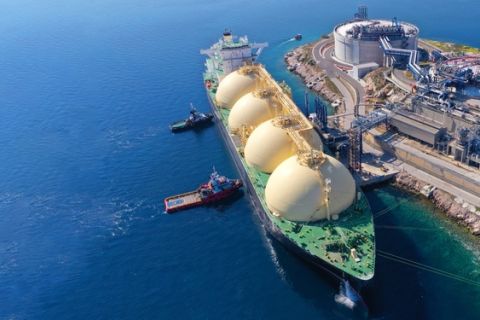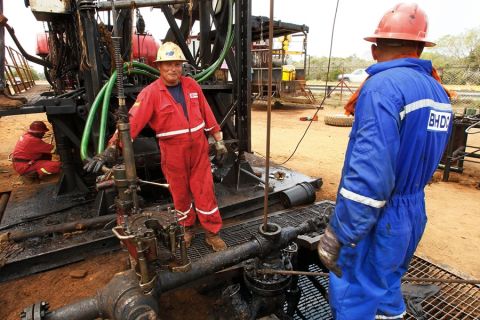Jennifer Pallanich, senior technology editor, Hart Energy: I'm Jennifer Pallanich, the senior technology editor with Tech Trends here at CERA Week by S&P Global with ABB’s Johan de Villiers, to discuss how autonomous operations can help reduce offshore emissions.
Johan de Villiers, senior vice president global and strategic accounts, ABB: So when it comes to the offshore sector, 80% of emissions come from power to supply the operations. None of this can operate without advanced automation, but taking that next level by adding digital technology to it, adding the telecommunication interface to shore, adding the cybersecurity and the remote operations center, then makes it possible for people to operate from shore to understand what maintenance needs there are, how to operate the plant, and then stretch the time periods between interventions when you really need to bring people to the facility.
You need the technology, but you need the main expertise. You need people that can really understand customers’ specific operating environment, the specific requirements that they've got, these specific priorities, and then deploy this technology and make things better, solve a problem, reduce the emissions, increase the efficiency. And we find on average between fixed and floating platforms—you could save 320,000 tons of CO2 per facility if you deploy this at an early phase, at the design inception phase.
JP: And that's Hart Energy Live’s Tech Trends with me, Jennifer Pallanich. Every Tuesday, we'll have a new episode drilling into the tech that fuels the oil patch at hartenergy.com/EP.
Recommended Reading
FERC Says 32 Bcf/d in US LNG Capacity Approved, Not Yet Built
2024-01-29 - The FERC—which has jurisdiction over the siting, construction and operation of LNG export facilities in the U.S.—reported that 18 projects worth 32 Bcf/d of export capacity have obtained approval but are yet to be built.
US Decision on Venezuelan License to Dictate Production Flow
2024-04-05 - The outlook for Venezuela’s oil industry appears uncertain, Rystad Energy said April 4 in a research report, as a license issued by the U.S. Office of Assets Control (OFAC) is set to expire on April 18.
US Orders Most Companies to Wind Down Operations in Venezuela by May
2024-04-17 - The U.S. Office of Foreign Assets Control issued a new license related to Venezuela that gives companies until the end of May to wind down operations following a lack of progress on national elections.
New BOEM Regulations Raise Industry Decommissioning Obligations by $6.9B
2024-04-15 - Under new regulations, the Bureau of Ocean Energy Management estimates the oil and gas industry will be required to provide an additional $6.9 billion in new financial assurances to cover industry decommissioning costs.
SEC Targets SPACs with New, Enhanced Disclosure Rules
2024-01-25 - SPAC IPOs and de-SPAC combinations became a popular means for private companies to access the public markets during the pandemic. Regulators aim to make the SPAC process closer to a traditional IPO.






